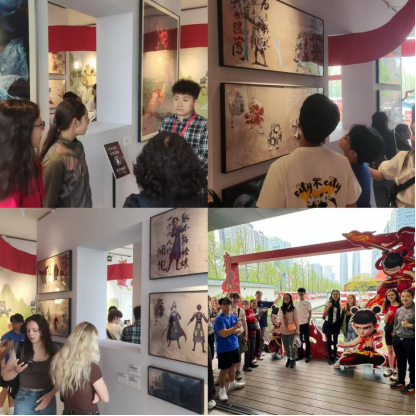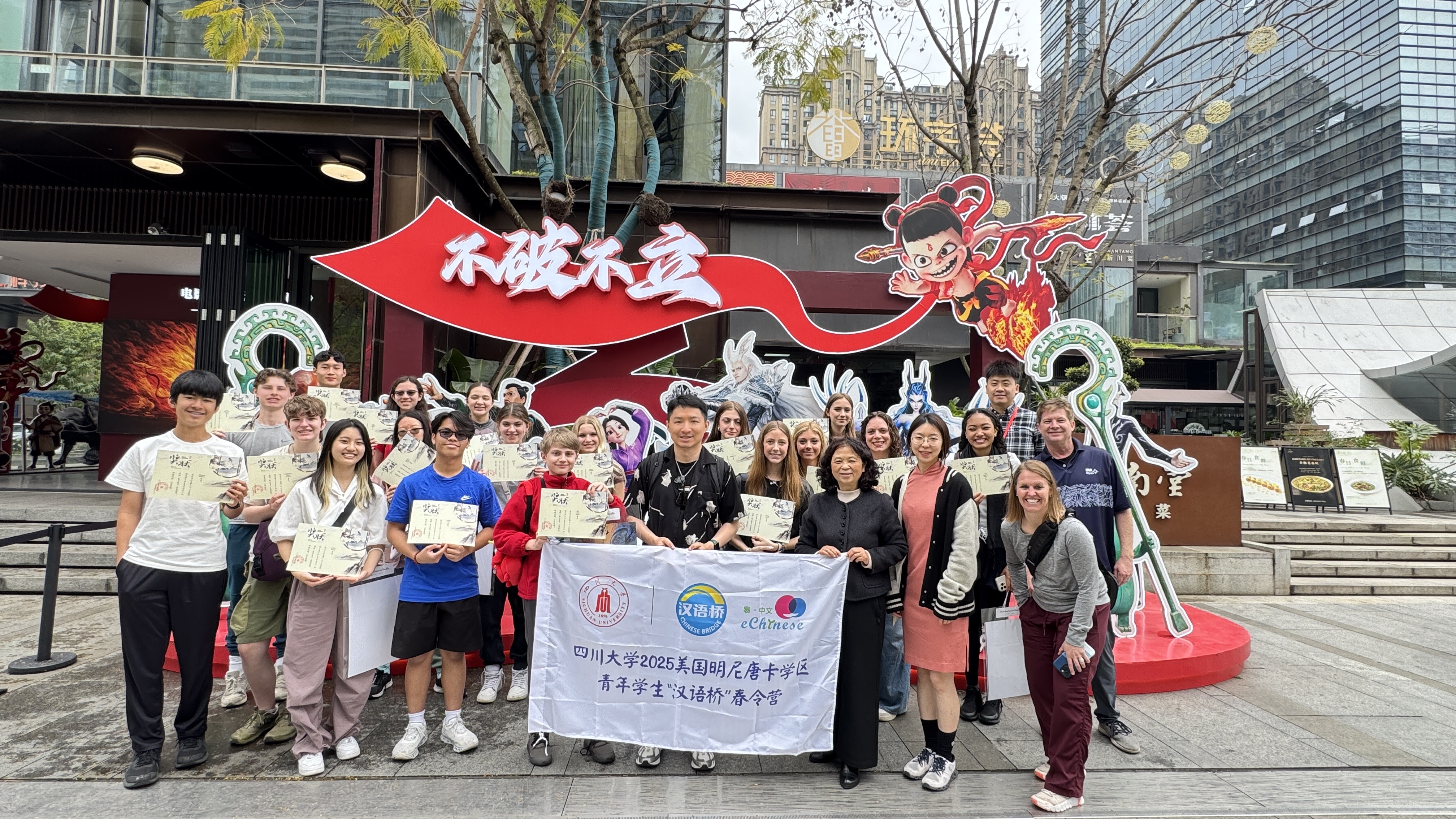Hosted by the School of Overseas Education (SOE) at Sichuan University (SCU), the "Chinese Bridge" for the Minnetonka School District of the United States successfully concluded. Featuring "technology, ingenuity, ecology and innovation", the activity showcased a dynamic and vibrant China to the American youth through four chapters of Jiuzhaigou Valley Scenic and Historic Interest Area, Intangible Cultural Heritage Workshop, Panda Base and Ne Zha (a mythical figure in Chinese culture) Special Exhibition.
Jiuzhaigou: A Real World Classroom of Ecological Civilization
At the Jiuzhaigou Valley Smart Center, the real-time ecological monitoring system showed the accurate data of water bodies and vegetation in the scenic area. Students witnessed the "Chinese miracle" of ecological restoration after the earthquake on interactive screens. They marveled at the reconstruction of travertine beaches through microbial remediation technology, as well as restoration of ancient tree communities through 3D modeling, both are perfect examples of ecological protection via technology.

Intangible Cultural Heritage Workshop: Cultural Genes Leaping at Fingertips
SCU has brought intangible cultural heritage skills into the Spring Camp. The courses include two themes: lacquer fan printing and dyeing, and facial makeup drawing. In the lacquer fan printing and dyeing special class, students learned about the historical types and technological processes of lacquer fans, experiencing the production of lacquer fans.

In the class of drama facial makeup, the intangible cultural heritage teacher first introduced in detail the development, types, characteristics, and production methods of facial makeup, and conveyed the symbolic language of drama facial makeup to students with catchphrases such as "red denotes loyalty and white treachery", showcasing a distinctive Eastern flavor in an interesting way.
Giant Panda Base: Ecological Mission Embodied in Cute Pandas
At the Chengdu Research Base of Giant Panda Breeding, American faculty and students finally got to see giant pandas at a close distance, an opportunity they had awaited for a long time.

During the visit, the docent detailed the biological characteristics of giant pandas: how their unique digestive system adapts to a bamboo-based diet; the evolutionary significance of black and white fur; and their importance as an "umbrella species" for the entire ecosystem. Students also learned that China has established 67 giant panda reserves, implemented ecological corridor projects and so forth.
Ne Zha Exhibition: a Creative Dialogue Between Tradition and Modernity
One of the highlights of this Camp is the "Ne Zha 2" exhibition at Chengdu Jiaozi Academy. Themed "Never Break, Never Stand", the exhibition vividly showcases the modern expression of traditional mythology through rich exhibits and interactive design.

Students stood in front of each artwork, carefully scrutinized its design details, marveling at the designer's creative fusion of traditional elements and modern trends.
The two-week Understanding Contemporary China Tour, through four themes, allowed 21 American faculty and students to not only experience the profoundness of Chinese culture, but also build a bridge of cross-cultural understanding.



